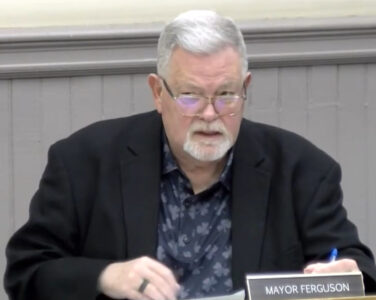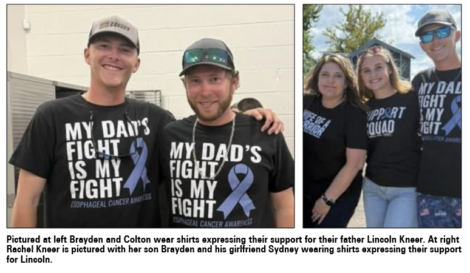200 years ago, Fredonia lit the way

In the summer of 2025, the village of Fredonia commemorated a significant milestone: the 200th anniversary of the world’s first commercial gas well, drilled along Canadaway Creek.
A Village of Firsts
The Village of Fredonia has witnessed multiple cultural and scientific achievements since its incorporation in 1829. Fredonia was home to one of Western New York’s first institutions of higher learning, the Fredonia Academy, forerunner to the Fredonia Normal School, which evolved into State University of New York (SUNY) at Fredonia, and where several future noteworthies, including James McGraw (McGraw-Hill Publishing Co.) and Dr. Benjamin Franklin Goodrich (B.F. Goodrich Tire Company) had matriculated. In the late 1860s the United States first Grange Hall was established in the Village. The Women’s Crusade, located in the Fredonia Baptist Church, was one of the first formal groups in the United States to organize and protest against alcohol in 1873. This local protest movement served as the groundworks for the National Woman’s Christian Temperance Union formed in Cleveland Ohio in 1874.
William Hart and the Birth of an Industry
An especially significant scientific achievement witnessed by Fredonia was the first commercial gas well drilled in 1825 by William Hart along Canadaway Creek immediately north of the Main Street bridge over the creek. Hart, known to some as the Father of the Natural Gas Industry, hailed from Massachusetts but settled in Fredonia as a gunsmith where he acquired several patents related to his trade. The story goes that Hart observed children playing and lighting bubbles of gas percolating from cracks in the shale stream bed of Canadaway Creek. Hart, tech savvy for his time and a shrewd businessman, believed that if he could collect natural gas, it could be used for illumination.
Little did he realize how this discovery would impact future mankind. Hart set to work drilling a well to a depth of 27 feet and collecting gas in a crude reservoir at the top of the well from where gas was delivered by hollowed out logs to a few nearby businesses. The Aug. 31,1825, issue of the Fredonia Censor noted several stores and a mill along Canadaway Creek were now illuminated by flickering light created from natural gas.
Dr. Elisha Mitchell, a geologist and chemist from the University of North Carolina at Chapel Hill who studied under Benjamin Silliman, a well-known chemist from Yale, described Hart’s discovery as “an instance unparallel on the face of the globe.”
Hart’s discovery was recognized by international scientists, including Charles Lyell. In 1841, Lyell, a Scottish geologist and contemporary of Charles Darwin, visited Fredonia. He documented the Village’s usage of natural gas for lighting in his 1845 travelogue titled “Travels in North America, in the years 1841-42, with Geological Observations on the United States, Canada, and Nova Scotia.” “The streets are lighted up with natural gas, which bubbles up out of the ground, and is received into a gasometer, which I visited,” he enthused.
Preston Barmore: A Visionary Ignored by History
In the numerous histories written of the development of natural gas and oil in the United States, one name rarely encountered is that of Preston Barmore. This oversight likely is more a reflection of the sadly short life of this unassuming young man rather than any lack of contribution on his part to the burgeoning hydrocarbon industry of the late 19th century.
Preston Barmore was born in 1831 in Forestville, six years after William Hart drilled his well along the banks of Canadaway Creek. Barmore received his formal education at Fredonia Academy, attending the Academy from August 1847 through spring 1851, taking the typical range of required courses for the time, which included a course on geology using Edward Hitchcock’s “Elementary Geology,” published in 1840. Following graduation, Barmore eschewed the family cabinetry and coffin-making business, instead finding employment as a census marshal. In 1856, Barmore entered politics as a Republican and a speaker at the “Fremont Club.”
Political pursuits appear not to have been enough to keep Barmore occupied, for he soon directed his energies to the production of natural gas. There can be little doubt that he was aware of what Hart, by this time a relative through marriage, had accomplished two decades earlier with the illumination of a modest number of businesses along Fredonia’s Canadaway Creek.
Perhaps Barmore also was familiar with Lewis Caleb Beck’s elaborate report on New York’s mineralogy. Beck, who had been appointed mineralogist of the New York State Geological Survey of 1835-41, was especially interested in the occurrence of natural gas near Fredonia, where Beck described the relationship between the gas bubbles in Canadaway Creek occurring when the water was low and the disappearance of the creek bubbles with the rising water level following rain. This last point would not be lost on Barmore. From Beck’s observation, Barmore concluded that natural gas flowed through cracks in the shale found in the beds of the creek.
In 1856 Barmore entered into a financial agreement with a man named Elias Forbes that resulted in the purchase of a small plot of land on the Risley farm along Canadaway Creek where Lewis Beck had described a robust flow of gas from fractured shale in the creek bottom. Further, the newly purchased land was located about three-quarters of a mile downstream from where Hart had drilled his 1825 well.
On April 14, 1857, the Fredonia Gas Light and Water Works Co. was incorporated as the country’s first natural gas company. Soon after this, Barmore began his operations on property along Canadaway Creek a short distance north of Risley Street. His initial foray involved the drilling of two wells, neither of which was very productive. Undeterred, Barmore, who appears to have understood the importance of fractures as conduits of gas through the otherwise impermeable shale, decided to assess the possibility of inducing artificial fractures as a means of enhancing the flow of gas from his wells.
The Dec. 16, 1857, issue of the Fredonia Censor described Barmore’s attempt to increase the flow of gas from one of his wells by using a charge of gunpowder to fracture the rock allowing gas to follow freely.
Barmore continued to improve his wells throughout 1858. In November of that year, the Fredonia Gas Light and Water Works Co. was renamed the Fredonia Natural Gas Co., and Barmore was named the company’s secretary and superintendent. Earlier that fall, Barmore had started pumping water from the Risley wells as a means of improving gas extraction. His efforts were a smashing success, yielding 9,600 cubic feet — enough gas to supply 1,200 lights or burners.
At some point, Barmore realized he needed to devise the means of storing the gas he was producing. To this end, he purchased a lot on Fredonia’s Center Street, about three-quarters of a mile from the Risley well, for the purpose of constructing a gasometer (another first) within which to store produced gas. A network of four-inch-diameter lead pipes was laid at a depth of three-and-one-half feet from the wells on the Risley property to the newly constructed octagonal brick gasometer on Center Street. It is noteworthy that Barmore’s gasometer stood in the village in various capacities until collapsing during a heavy snowstorm in January 1964.
By the middle of 1858, many stores and businesses in the village as well as many street corners were illuminated by gas emanating from Barmore’s wells on the Risley property. Nonresidential buildings that used gas for illumination included the Fredonia Trinity Episcopal Church, where the gas was metered at a cost of $4 per 1,000 cubic feet. It was hoped that the planned upgrading of the Center Street gasometer and the laying of additional lead pipe throughout the village would bring private residences “online” and that supplying gas to non-commercial customers would help to reduce the alarming number of private wells that were springing up throughout the village, including in the basements of some houses.
By December 1858, the first of many gas burners had been placed in downtown Fredonia, including the Barmore and Brothers grocery store. The Fredonia Natural Gas Co. had been contracted by the village to have at least four street lamps burning natural gas by Christmas Eve. By June of the following year, 150 lights were illuminated by gas supplied by the Fredonia Natural Gas Co. and more pipes were being laid to illuminate more and more of the village.
Soon after getting his Fredonia business in order, Barmore and William Hart traveled to the newly opened oil play of northwestern Pennsylvania along Oil Creek, where he formed the Empire Shale Rock Oil Works and began drilling oil wells. Barmore again displayed his scientific and engineering acumen by using natural gas recovered as a by-product of the production of oil to heat boilers that powered steam engines used in his oil drilling operations.
Sadly, Preston Barmore passed away in 1861 at the young age of 30, suffering the effects of alcoholism. Perhaps a response to the nature of her son’s death, Barmore’s mother as well as his sister-in-law helped found the Women’s Temperance Crusade of 1873-74. It is impossible to gauge what impact Preston Barmore would have had on the search for gas and oil if he lived another 30 or 40 years. Barmore’s interests extended beyond the production of natural gas to considerations of the transportation, storage and marketing of gas. That is, Barmore was interested in developing an industry — the natural gas industry.
In 1925, the Daughters of the American Revolution commemorated Fredonia’s unique and pioneering role in the natural gas industry by placing a large boulder bearing a plaque close to the site of Hart’s 1825 well along Main Street near the downtown bridge over Canadaway Creek.
Eileen Lash is a former Fredonia resident who now resides in Pennsylvania.





